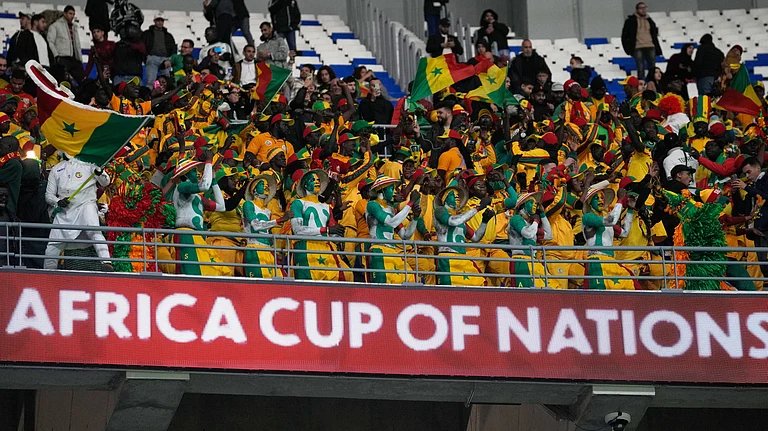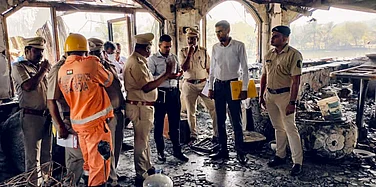In the sanctity of hospitals, where lives are saved and healing is fostered, a silent epidemic has been escalating: violence against doctors. These dedicated professionals, who take an oath to protect life, are becoming the targets of physical and verbal abuse. This alarming trend poses a significant threat to not only the body but also the soul of those dedicated to healing and it raises questions about our government and their safety policy. It is an issue cloaked in silence that demands our immediate attention.
Dr Mansi is a physician at Hindu Rao Hospital in Delhi who spends her days diagnosing and healing others. Behind her calmness lies a hidden fear of being attacked anytime and anywhere by patients or their relatives. Her aspiration to be promoted to senior doctor comes with a nightmare, that with major responsibilities come a lot of expectations from patients and their families which can take the form of violence and abuse.
“We are not servants but workers who help them to survive in the world,” says Mansi.
Mansi is not alone. Doctors in India have time and again been subjected to pelting of stones, physical assault, and even denied dignity after death despite their relentless effort to treat patients amidst unwarranted violence.
The weight of fear fills the hearts of every healthcare worker, from nurses and interns to senior doctors and surgeons. They express how this fear becomes an obstacle, getting in the way of their ability to diagnose with the clear and focused mindset that patients deserve. Their spirits carry the weight of sorrow, unlike others who can easily find comfort.
A trainee doctor at AIIMS, who wished to keep his identity private, says, “The government takes no action against this and that makes us very angry. In AIIMS, incidents of violence is much more common than in any other hospital.”
“If this situation continues, there will be a time when every doctor from India will leave the country,” says a junior doctor at Safdarjung Hospital.
Speaking up against these issues can have severe consequences, endangering their employment and staining the reputation of the hospital. Consequently, they are often silenced by management, unable to voice their concerns openly and freely. But in many cases, we as citizens and patients overlook and neglect these hidden wounds and fail to provide respect and support.
The endless list
On July 1, when the country was busy celebrating Doctors’ Day by sharing messages on social media, a house surgeon at Ernakulam Hospital in Kerala was attacked by two men because the doctor confronted them for troubling a woman.
On May 12, a 40-year-old doctor on duty in the emergency ward of the civil hospital in Faridabad was assaulted by attendants of a patient who was brought to the hospital with head injuries. As the doctor was attending to another patient, he could not immediately attend to the patient, which infuriated the attendants and they started beating him. The accused fled after the incident.
On May 10, Dr Vandana Das, a house surgeon at Kottarakkara Taluk Hospital in Kerala lost her life after Sandeep, a patient who was brought to the hospital for wound dressing, fatally stabbed her using surgical scissors.
On May 1, an intern at Hindu Rao Hospital was allegedly attacked by a woman admitted there.
When the nation was battling the Covid-19 pandemic, healthcare workers emerged as fearless guards in the fight against coronavirus. Despite their selfless dedication, medical professionals were subjected to regular assaults and verbal abuse throughout the country.
On May 23, 2021, an on-duty woman doctor was assaulted by the relative of a Covid-19 patient in Ballari, Karnataka.
On June 1, 2021, Dr Seuj Kumar Senapati, posted at a Covid Care Centre (CCC) in Udali in Assam’s Hojai district, was brutally beaten and thrashed by utensils and brooms by a mob that included the family members of a deceased patient.
The list does not end here. Many cases go unreported. Doctors also often acknowledge the situation of the relatives of the patient who are in distress and do not report the case. Moreover, the violence is not only limited to physical assault but also verbal abuse, telephonic threats, murder, and arson.
Peeling back the layers of the situation, the main factors contributing to such incidents include lengthy patient waiting times in public healthcare facilities, dissatisfaction with the behaviour of nursing staff, delayed medical care, overcrowded hospitals, medicine shortages, and poor working conditions for doctors. However, determining who is exactly to blame for these occurrences is complex.
“I will not say that every time the doctor is right. Sometimes, doctors misdiagnose but this does not mean that every doctor is wrong. People should understand that a doctor is not God. They cannot control the situation but can only act according to the situation. If people think it’s the doctor’s mistake, then they should file a complaint instead of acting violently,” says a doctor at Uma Sanjeevni Hospital in Haryana’s Gurugram.
India’s healthcare system fails its massive population. Moreover, an increasing number of doctors are employed in private hospitals, causing severe understaffing in government hospitals which see more patients. This puts a tremendous burden on healthcare workers, forcing them to work long hours in stressful and inadequate work environments. As a result, they become more prone to unintentional errors and incidents of violence.
Violence or harassment against doctors at private hospitals often results from an unrealistic expectation that paying more money should guarantee a successful outcome —a miracle— even in case of risky medical procedures.
Whose fault is it?
It would be unfair to solely blame the patient and their attendees for their actions. In times of distress, due to limited health literacy, most family members do not fully grasp the severity of the illness and become disheartened by unmet expectations. Improper explanations by doctors, who may lack proper training or be exhausted, can also contribute to misunderstandings. Additionally, the loss of a loved one and financial constraints further fuel their grief and anger.
While there are various factors contributing to these incidents, pinpointing the sole entity to blame is challenging. It involves a combination of systemic issues, unrealistic expectations, poor communication, and emotional turmoil experienced by patients and their families.
The focus should be on the healthcare system and the government’s failure to protect healthcare workers. Although a Medical Protection Act is in place to prohibit attacks on doctors and damage to their property, it is not a central law and is implemented only at the state level. This decentralised approach makes it challenging to enforce the act effectively as it is not linked to the Indian Penal Code (IPC) and the Code of Criminal Procedure (CrPC). Consequently, victims face difficulties in filing complaints, and the police encounter obstacles in registering cases under the appropriate sections.
In 2019, the Union Health Ministry drafted a bill known as the Prohibition of Violence and Damage to Property Bill, which was aimed at addressing violence against healthcare professionals.
The Union Home Ministry, however, denied the need for a separate law to address violence against healthcare workers and received criticism for it. Subsequently, in response to numerous incidents of violence during the pandemic, the government introduced the Epidemic Disease Ordinance. This amendment to the epidemic disease act includes provisions for the protection of healthcare professionals. However, for this ordinance to become an act, it still needs to be ratified by both the houses of the Parliament — a step that has not yet been taken. Furthermore, this ordinance undermines the seriousness of violence against doctors by assuming it is only prevalent during epidemics, disregarding the fact that such violence occurs across nations and throughout different times.
The lack of a dedicated central law specifically aimed at violence against healthcare professionals undermines the gravity of the issue and fails to provide adequate protection for those on the frontline of medical care. The existing legal framework may not be sufficient to address the unique challenges and risks faced by doctors and other healthcare workers. Proposed bills have shown some recognition of the issue, but their implementation and comprehensive coverage remain in question.
Efforts should be made to recognise the distinct nature of violence against medical professionals and establish comprehensive legislation that ensures their safety and well-being. In a society where doctors are considered gods and many parents aspire for their children to join the medical profession, it is crucial to ensure that our doctors do not regret their years of hard work in a profession that is undervalued.


























